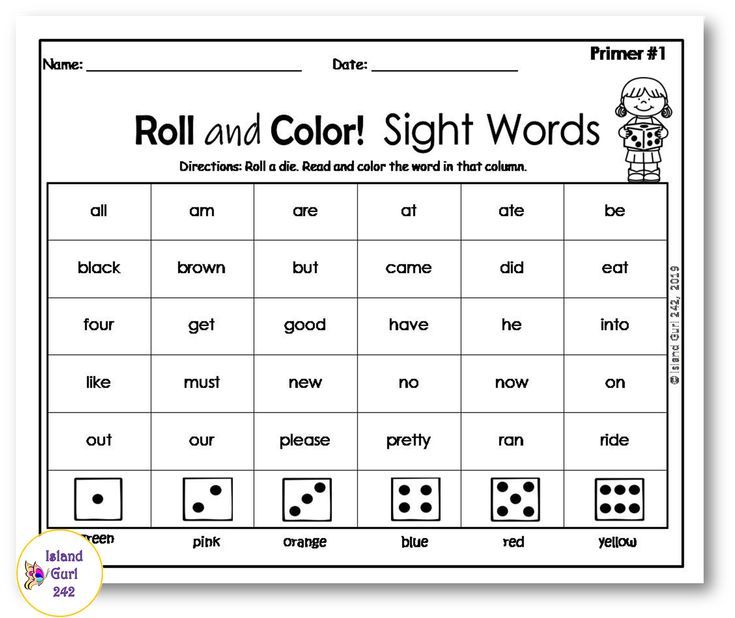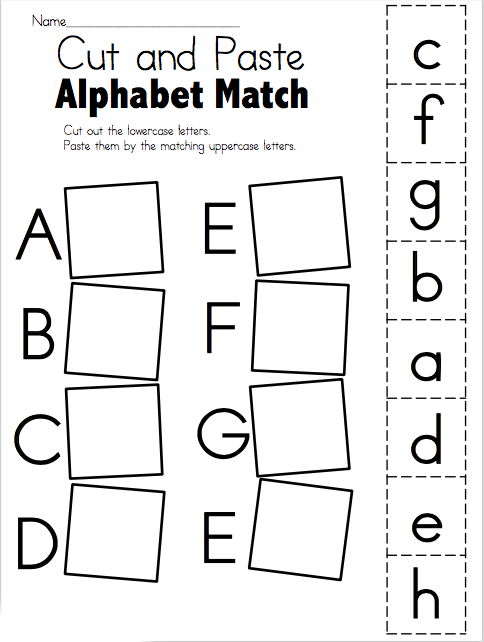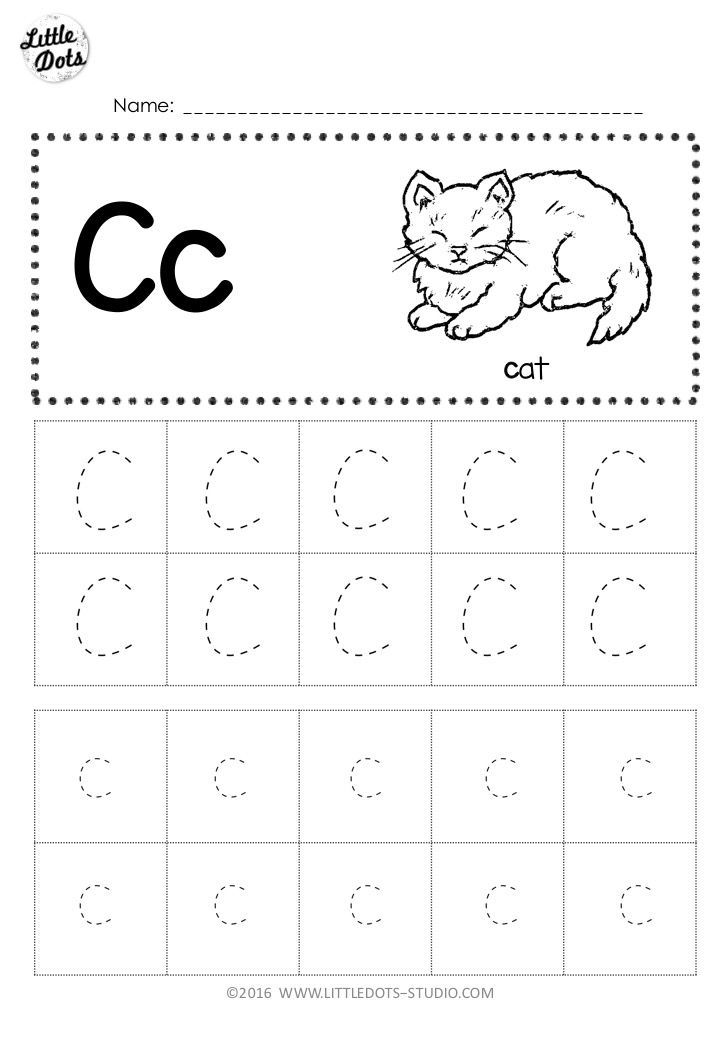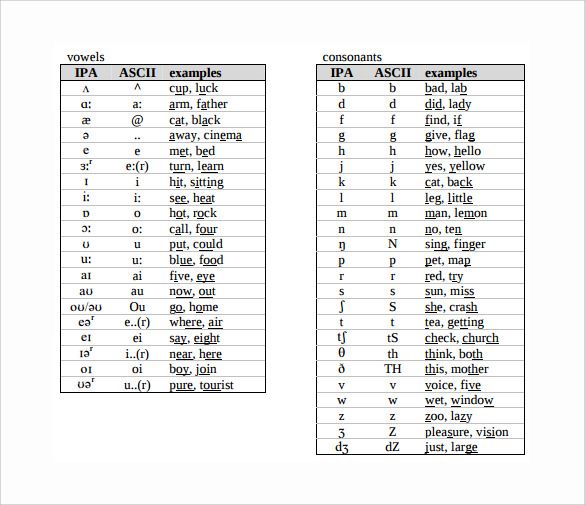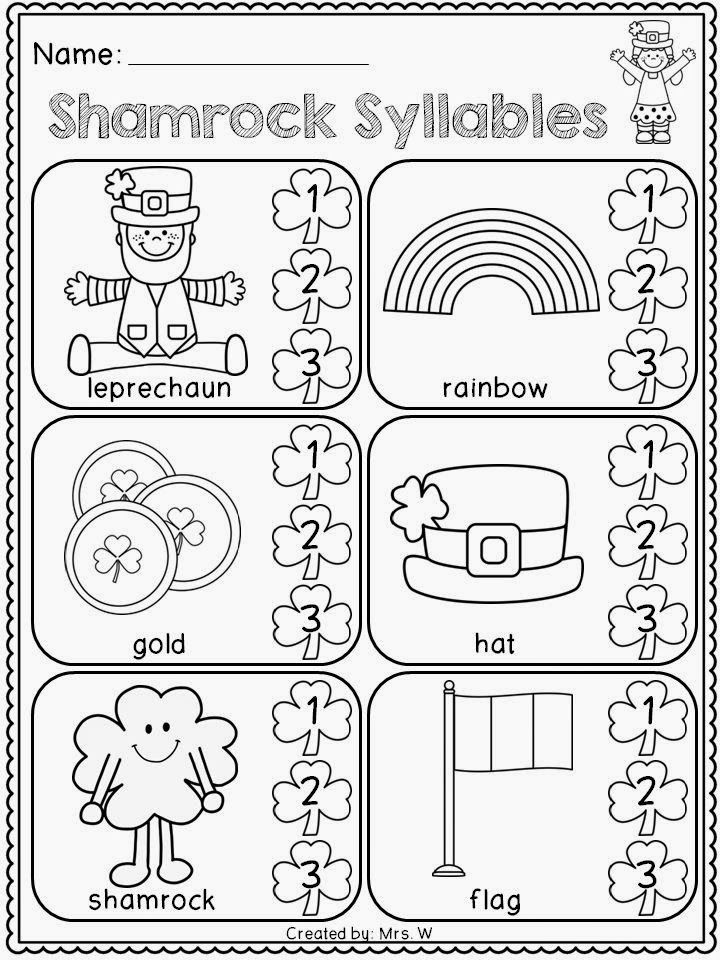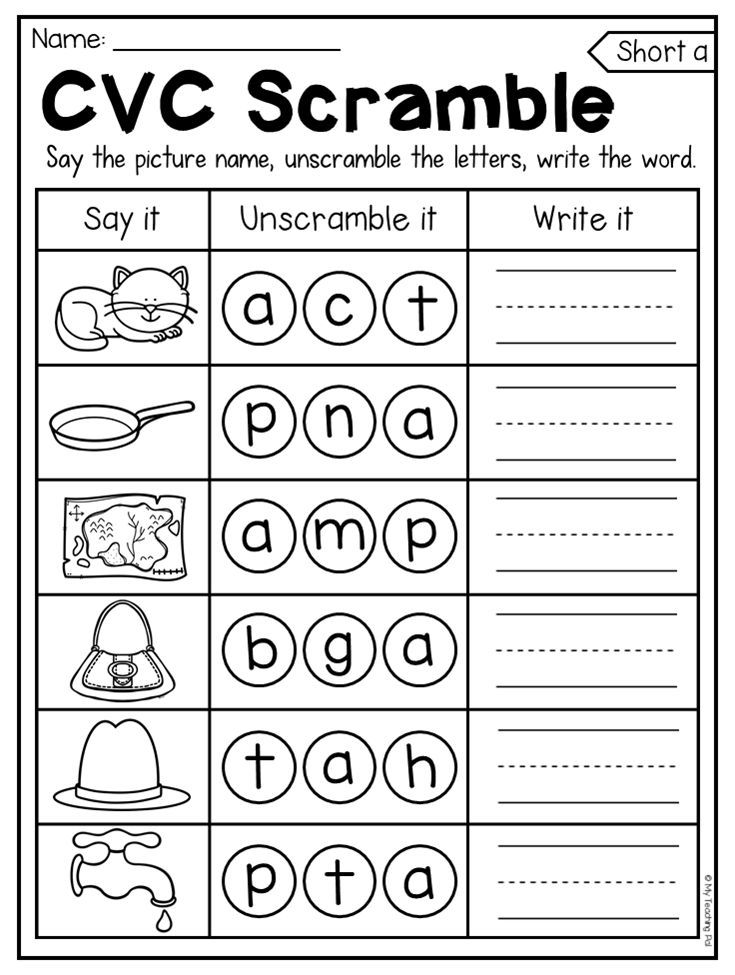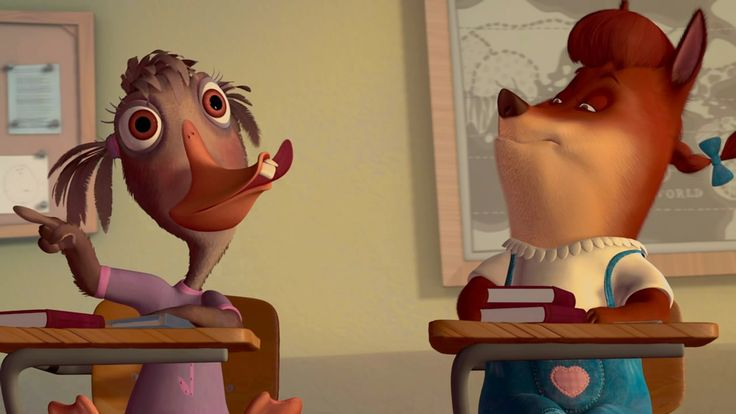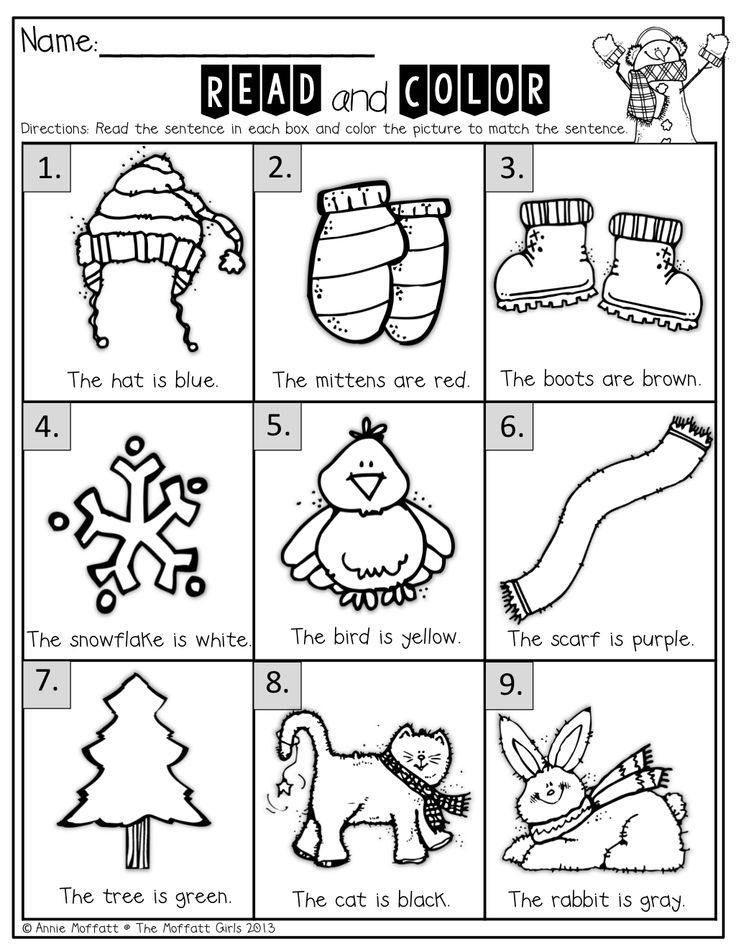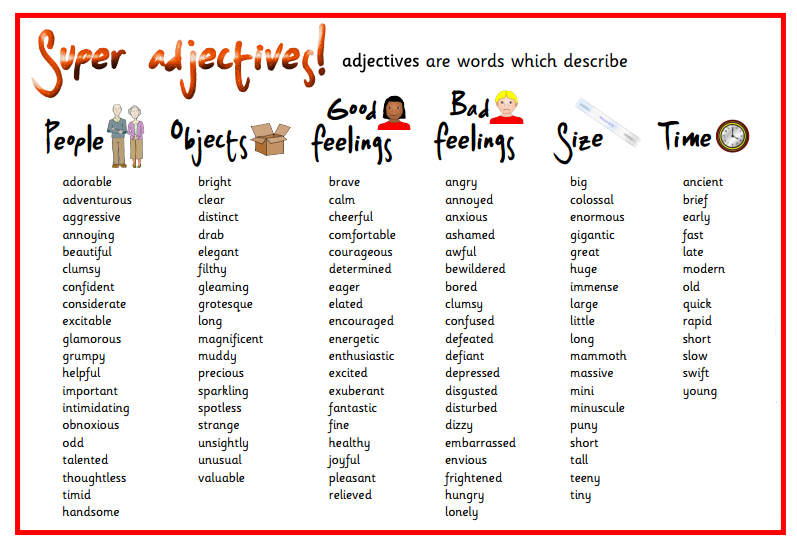Sight word has
Top 100 Sight Words and How to Teach Them
Sight words is a common term in reading that has a variety of meanings. When it is applied to early reading instruction, it typically refers to the set of about 100 words that keeps reappearing on almost any page of text. “Who, the, he, were, does, their, me, be” are a few examples.
In addition to their being very frequent, many of these words cannot be “sounded out.” Children are expected to learn them by sight (that is, by looking at them and recognizing them, without any attempt to sound them out.)
Unfortunately, this means minimal teaching. Often, little is done other than to show the word and tell the child what it is “saying.” For many children, this is not enough, with the result that their reading of these critical words is laden with error.
What does this mean for parents who are helping their children master reading? Basically it means spending some time in truly teaching these words so that your child gains real mastery of them. The key to achieving this goal is accurate writing (spelling)—via memory. That is, the child writes the word when the model is not in view.
You can do this by creating simple sentences that the child reads. (By using sentences, you will automatically be using many “sight words.” In addition, you will be giving your child the opportunity to deal with words in context—a key to meaningful reading) After showing the sentence and having your child read it, turn it over and then dictate the sentence. If there is an error, you immediately stop your child and take away the paper. Then you show the model again and repeat the process. In other words, the writing of the sentence has to be fully accurate, starting with the first word.
If you want a list of those words to help guide your efforts, here is the top 100 according to the American Heritage Word Frequency Book by John B. Carroll.
A: a, an, at, are, as, at, and, all, about, after
B: be, by, but, been
C: can, could, called
D: did, down, do
E: each
F: from, first, find, for
H: he, his, had, how, has, her, have, him
I: in, I, if, into, is, it, its
J: just
K: know
L: like, long, little
M: my, made, may, make, more, many, most,
N: not, no, now
O: or, one, of, out, other, over, only, on
P: people
S: said, she, some, so, see
T: the, to, they, this, there, them, then, these, two, time, than, that, their
U: up, use
V: very
W: was, with, what, were, when, we, which, will, would, words, where, water, who, way
Y: you, your
Click here to download our Recommended Top 100 Sight Words.
Literacy and reading expert, Dr. Marion Blank
Dr. Marion Blank is answering your questions about reading and learning. If you have a question for Dr. Marion, visit the Reading Kingdom Facebook Page and let us know how we can help.
If you think the Reading Kingdom program can help your children learn to read, enjoy a free, 30-day trial here.
Sight Words | Sight Words: Teach Your Child to Read
Learn the history behind Dolch and Fry sight words, and why they are important in developing fluent readers.
More
Follow the sight words teaching techniques. Learn research-validated and classroom-proven ways to introduce words, reinforce learning, and correct mistakes.
More
Print your own sight words flash cards. Create a set of Dolch or Fry sight words flash cards, or use your own custom set of words.
More
Play sight words games. Make games that create fun opportunities for repetition and reinforcement of the lessons.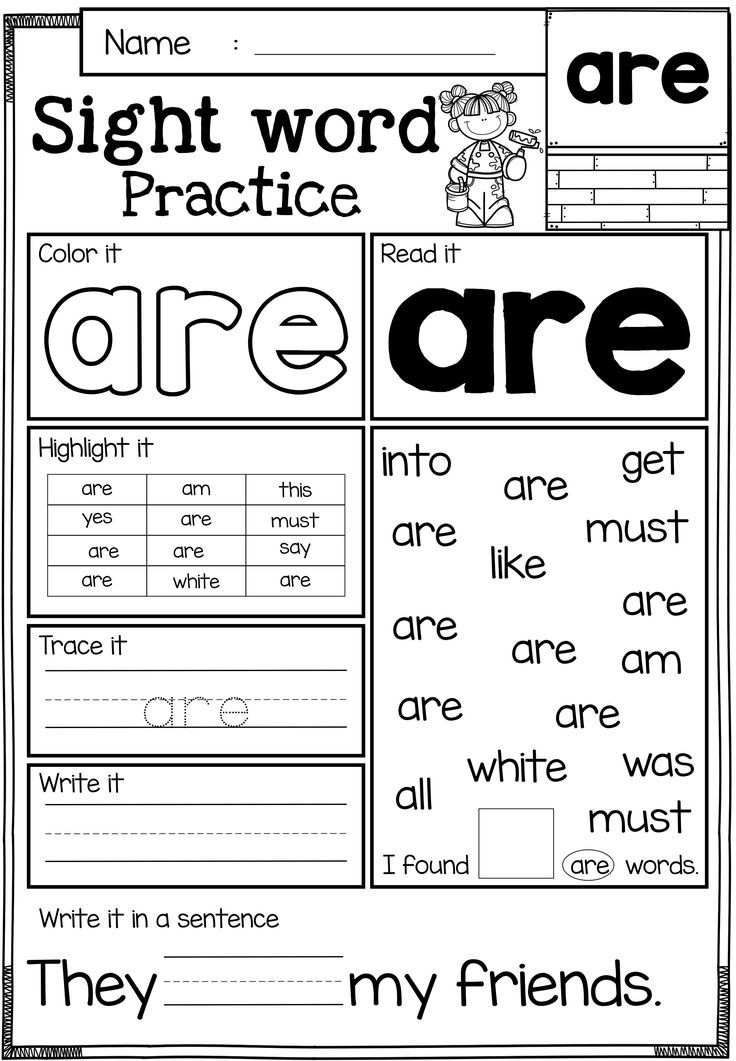
More
- Overview
- What Are Sight Words?
- Types of Sight Words
- When to Start
- Scaling & Scaffolding
- Research
- Questions and Answers
Sight words instruction is an excellent supplement to phonics instruction. Phonics is a method for learning to read in general, while sight words instruction increases a child’s familiarity with the high frequency words he will encounter most often.
The best way to learn sight words is through lots and lots of repetition, in the form of flashcard exercises and word-focused games.
↑ Top
Sight words are words that should be memorized to help a child learn to read and write. Learning sight words allows a child to recognize these words at a glance — on sight — without needing to break the words down into their individual letters and is the way strong readers recognize most words.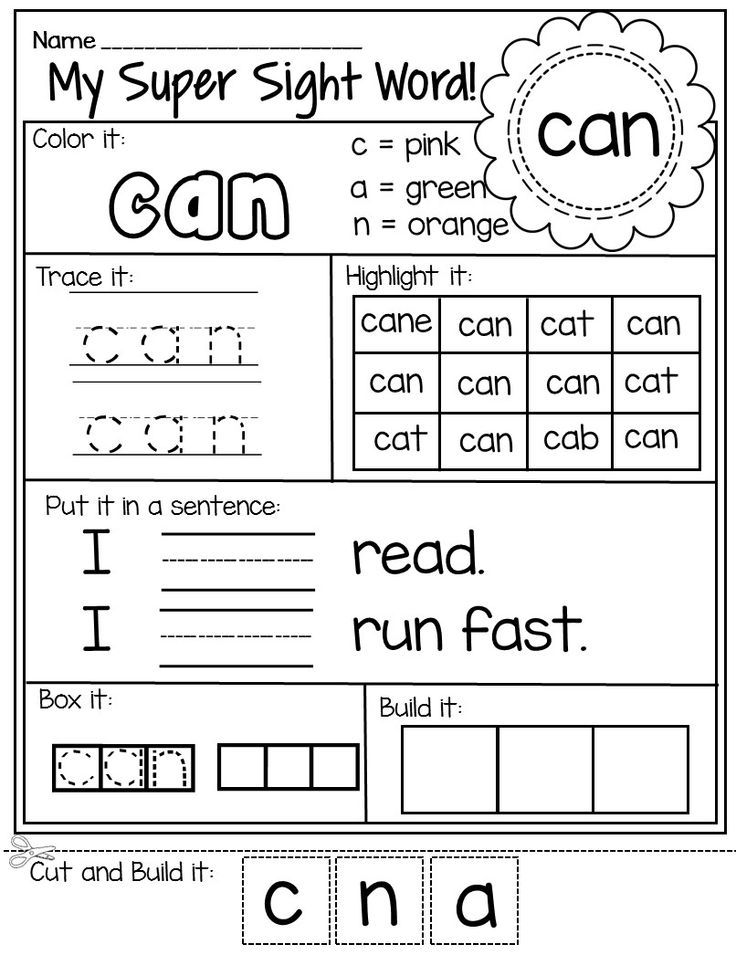 Knowing common, or high frequency, words by sight makes reading easier and faster, because the reader does not need to stop to try and sound out each individual word, letter by letter.
Knowing common, or high frequency, words by sight makes reading easier and faster, because the reader does not need to stop to try and sound out each individual word, letter by letter.
Sight Words are memorized so that a child can recognize commonly used or phonetically irregular words at a glance, without needing to go letter-by-letter.
Other terms used to describe sight words include: service words, instant words (because you should recognize them instantly), snap words (because you should know them in a snap), and high frequency words. You will also hear them referred to as Dolch words or Fry words, the two most commonly used sight words lists.
Sight words are the glue that holds sentences together.
These pages contain resources to teach sight words, including: sight words flash cards, lessons, and games. If you are new to sight words, start with the teaching strategies to get a road map for teaching the material, showing you how to sequence the lessons and activities.
↑ Top
Sight words fall into two categories:
- Frequently Used Words — Words that occur commonly in the English language, such as it, can, and will. Memorizing these words makes reading much easier and smoother, because the child already recognizes most of the words and can concentrate their efforts on new words. For example, knowing just the Dolch Sight Words would enable you to read about 50% of a newspaper or 80% of a children’s book.
- Non-Phonetic Words — Words that cannot be decoded phonetically, such as buy, talk, or come. Memorizing these words with unnatural spellings and pronunciations teaches not only these words but also helps the reader recognize similar words, such as guy, walk, or some.
There are several lists of sight words that are in common use, such as Dolch, Fry, Top 150, and Core Curriculum.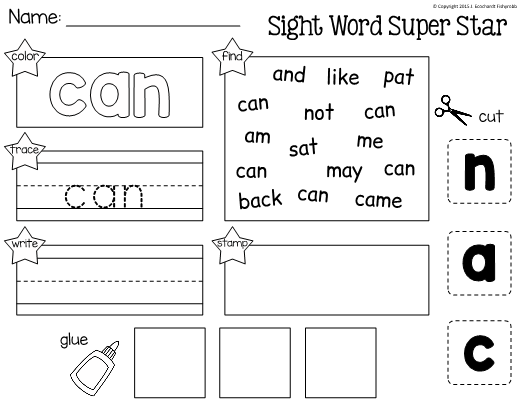 There is a great deal of overlap among the lists, but the Dolch sight word list is the most popular and widely used.
There is a great deal of overlap among the lists, but the Dolch sight word list is the most popular and widely used.
3.1 Dolch Sight Words
The Dolch Sight Words list is the most commonly used set of sight words. Educator Dr. Edward William Dolch developed the list in the 1930s-40s by studying the most frequently occurring words in children’s books of that era. The list contains 220 “service words” plus 95 high-frequency nouns. The Dolch sight words comprise 80% of the words you would find in a typical children’s book and 50% of the words found in writing for adults. Once a child knows the Dolch words, it makes reading much easier, because the child can then focus his or her attention on the remaining words.
More
3.2 Fry Sight Words
The Fry Sight Words list is a more modern list of words, and was extended to capture the most common 1,000 words. Dr. Edward Fry developed this expanded list in the 1950s (and updated it in 1980), based on the most common words to appear in reading materials used in Grades 3-9.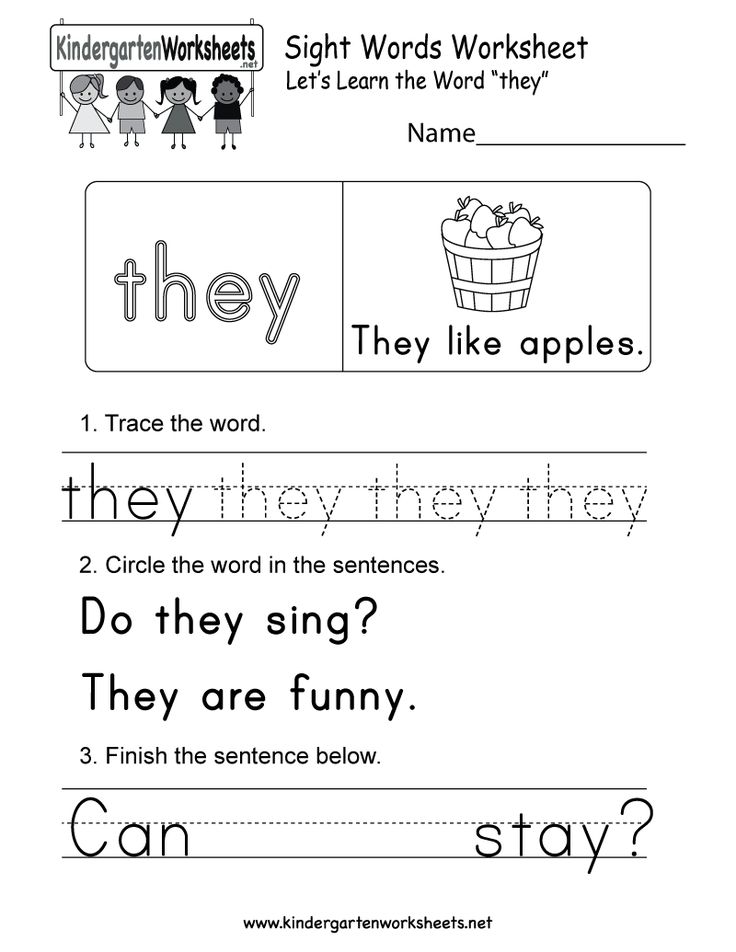 Learning all 1,000 words in the Fry sight word list would equip a child to read about 90% of the words in a typical book, newspaper, or website.
Learning all 1,000 words in the Fry sight word list would equip a child to read about 90% of the words in a typical book, newspaper, or website.
More
3.3 Top 150 Written Words
The Top 150 Written Words is the newest of the word lists featured on our site, and is commonly used by people who are learning to read English as a non-native language. This list consists of the 150 words that occur most frequently in printed English, according to the Word Frequency Book. This list is recommended by Sally E. Shaywitz, M.D., Professor of Learning Development at Yale University’s School of Medicine.
More
3.4 Other Sight Words Lists
There are many newer variations, such as the Common Core sight words, that tweak the Dolch and Fry sight words lists to find the combination of words that is the most beneficial for reading development. Many teachers take existing sight word lists and customize them, adding words from their own classroom lessons.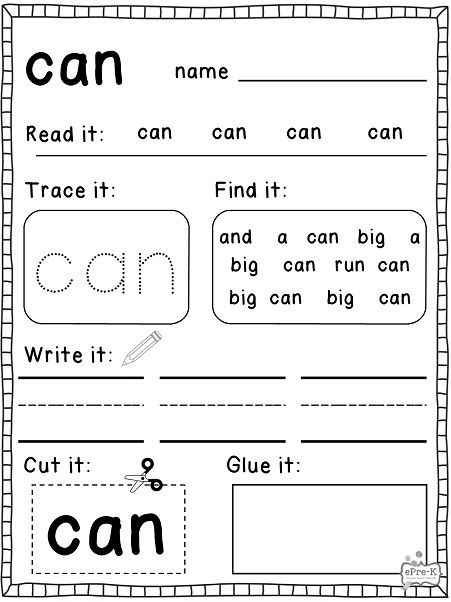
↑ Top
Before a child starts learning sight words, it is important that he/she be able to recognize and name all the lower-case letters of the alphabet. When prompted with a letter, the child should be able to name the letter quickly and confidently. Note that, different from learning phonics, the child does not need to know the letters’ sounds.
Before starting sight words, a child needs to be able to recognize and name all the lower-case letters of the alphabet.
If a student’s knowledge of letter names is still shaky, it is important to spend time practicing this skill before jumping into sight words. Having a solid foundation in the ability to instantly recognize and name the alphabet letters will make teaching sight words easier and more meaningful for the child.
Go to our Lessons for proven strategies on how to teach and practice sight words with your child.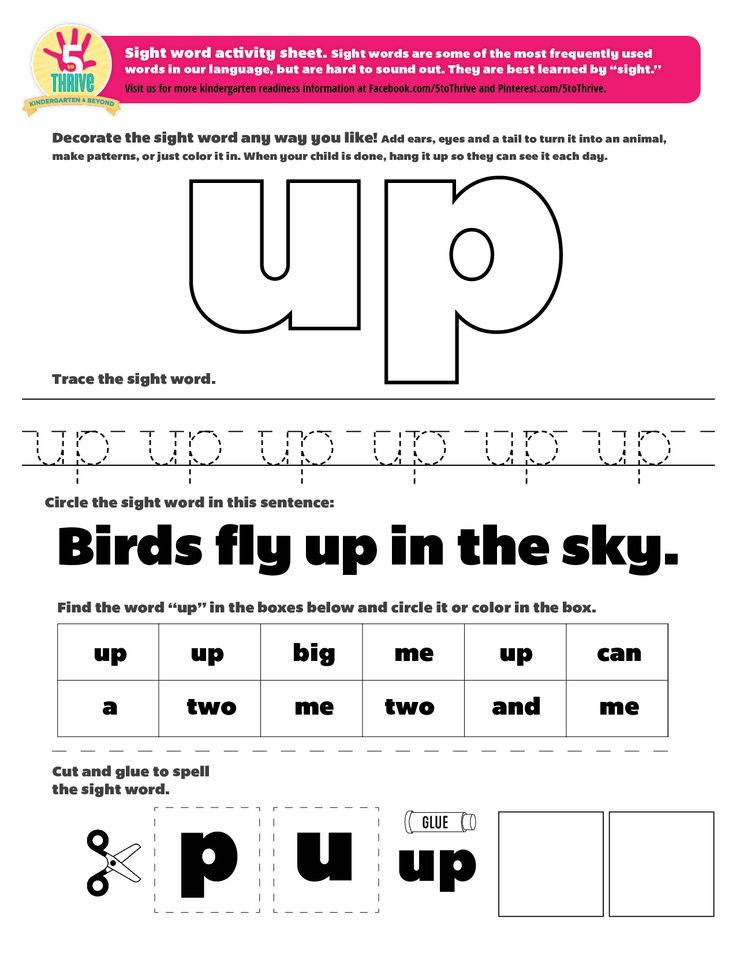
↑ Top
Every child is unique and will learn sight words at a different rate. A teacher may have a wide range of skill levels in the same classroom. Many of our sight words games can be adjusted to suit different skill levels.
Many of our activity pages feature recommendations for adjusting the game to the needs of your particular child or classroom:
- Confidence Builders suggest ways to simplify a sight words game for a struggling student.
- Extensions offer tips for a child who loves playing a particular game but needs to be challenged more.
- Variations suggest ways to change up the game a little, by tailoring it to a child’s special interests or making it “portable.”
- Small Group Adaptations offer ideas for scaling up from an individual child to a small group (2-5 children), ensuring that every child is engaged and learning.
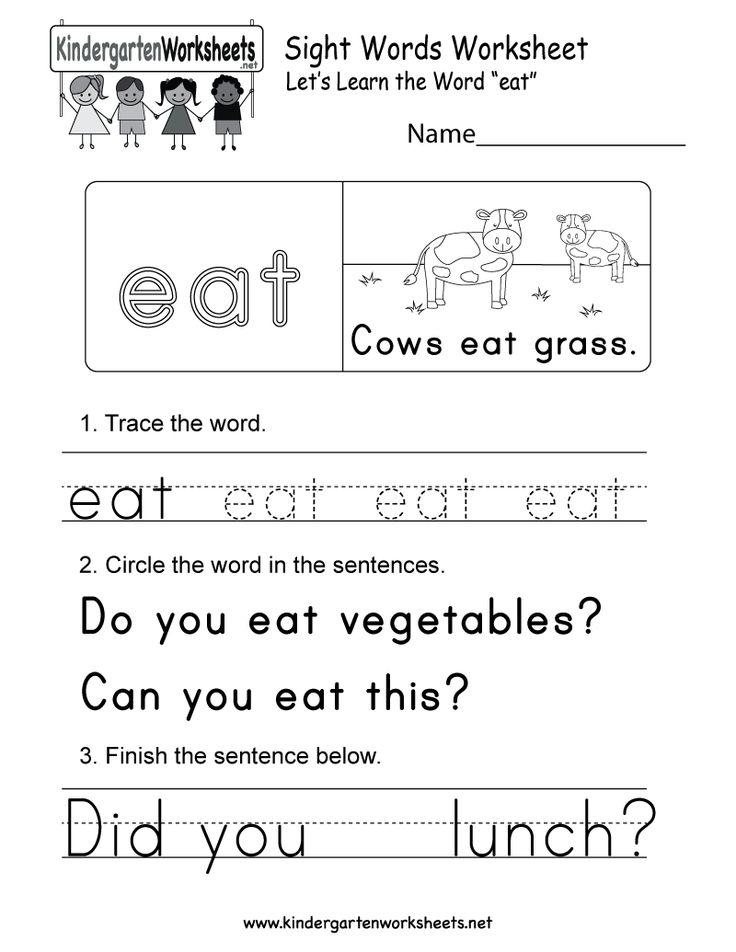
↑ Top
Our sight words teaching techniques are based not only on classroom experience but also on the latest in child literacy research. Here is a bibliography of some of the research supporting our approach to sight words instruction:
- Ceprano, M. A. “A review of selected research on methods of teaching sight words.” The Reading Teacher 35:3 (1981): 314-322.
- Ehri, Linnea C. “Grapheme–Phoneme Knowledge Is Essential for Learning to Read Words in English.” Word Recognition in Beginning Literacy. Mahwah, NJ: L. Erlbaum Associates, 1998.
- Enfield, Mary Lee, and Victoria Greene. Project Read. www.projectread.com. 1969.
- Gillingham, Anna, and Bessie W. Stillman. The Gillingham Manual: Remedial Training for Students with Specific Disability in Reading, Spelling, and Penmanship, 8th edition. Cambridge, MA: Educators Publishing Service, 2014.
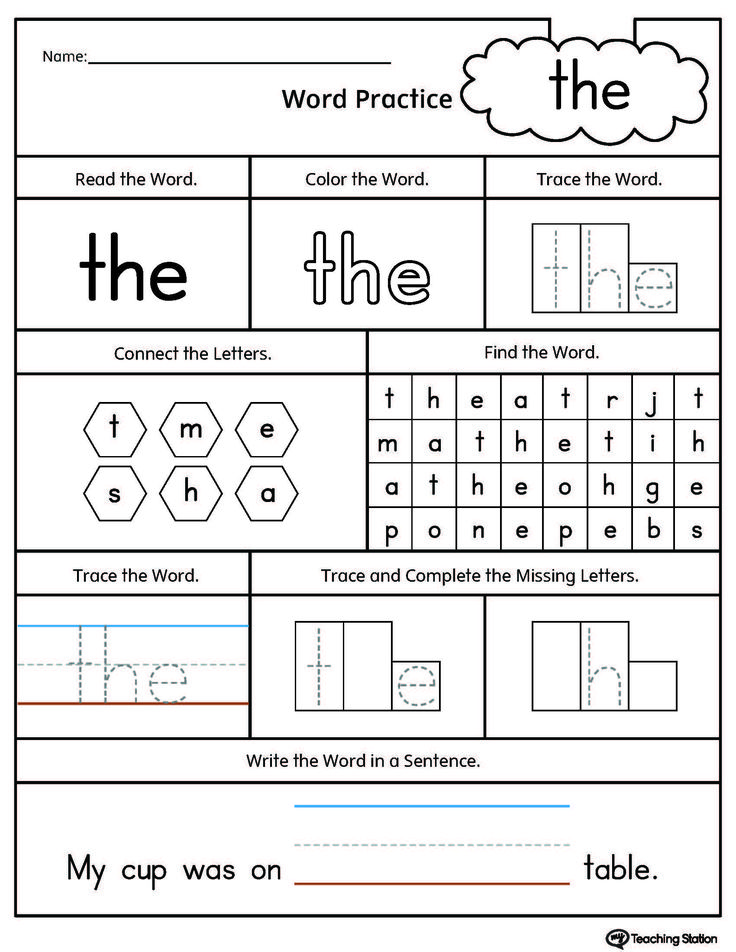
- Nist, Lindsay, and Laurice M. Joseph. “Effectiveness and Efficiency of Flashcard Drill Instructional Methods on Urban First-Graders’ Word Recognition, Acquisition, Maintenance, and Generalization.” School Psychology Review 37:3 (Fall 2008): 294-308.
- Shaywitz, Sally E. Overcoming Dyslexia: A New and Complete Science-Based Program for Reading Problems at Any Level. New York: Alfred A. Knopf, 2003.
- Stoner, J.C. “Teaching at-risk students to read using specialized techniques in the regular classroom.” Reading and Writing: An Interdisciplinary Journal 3 (1991).
- Wilson, Barbara A. “The Wilson Reading Method.” Learning Disabilities Journal 8:1 (February 1998): 12-13.
- Wilson, Barbara A. Wilson Reading System. Millbury, MA: Wilson Language Training, 1988.
↑ Top
Leave a Reply
How it works.
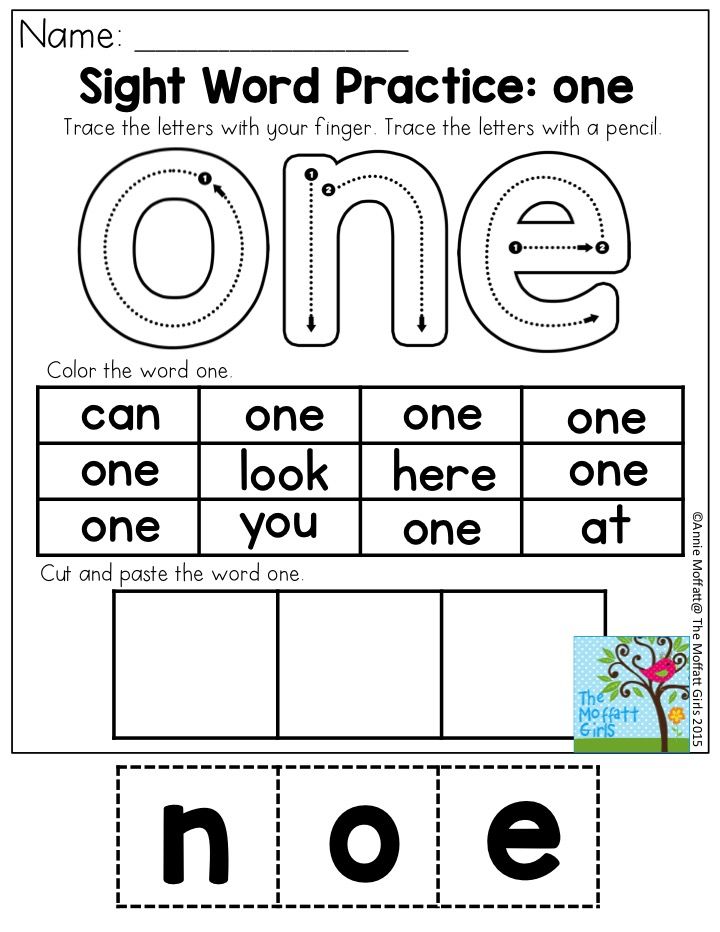 Reflex sight
Reflex sight
Photo: Shvabe
A modern red dot sight has a number of advantages over a standard mechanical sight with a rear sight and front sight. Such a device is useful for both athletes and hunters, as well as the military.
Today, Rostec enterprises develop and manufacture various modifications of collimator sights, including such high-tech versions as, for example, a holographic sight. We tell how the collimator is arranged and what are its advantages. nine0008
Shooting with your eyes open: the benefits of the
red dot sights The very word "collimator" in translation from Latin means "one who directs along a straight line." The name well reflects the very principle of collimation - the formation of light beams into parallel beams. The collimator sight allows you to replace the rear sight and front sight with a luminous dot that needs to be aligned with the target.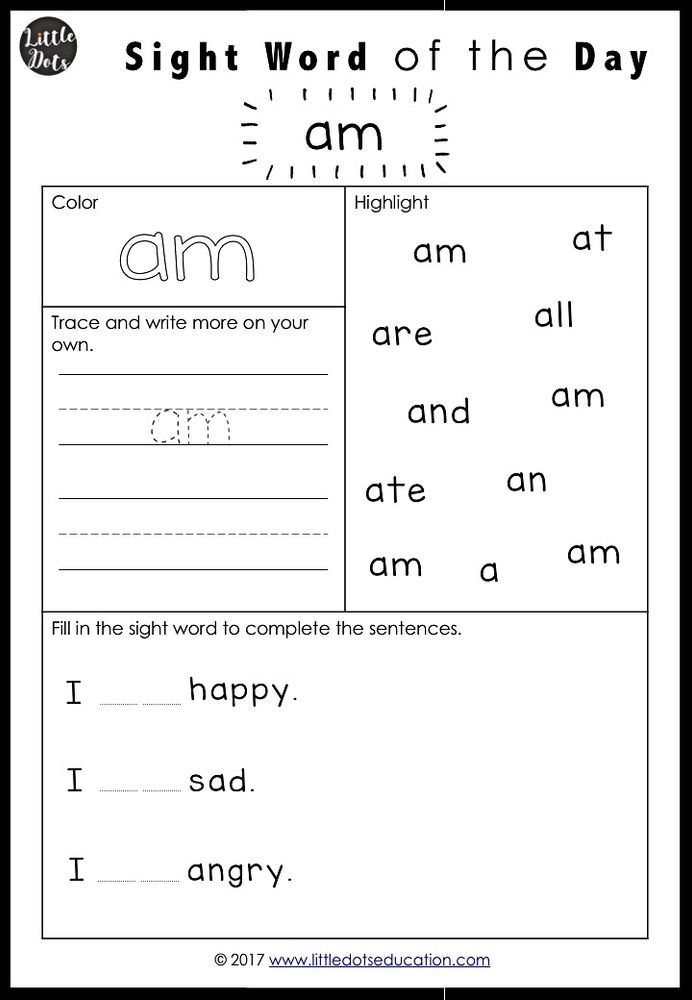 Thus, the light is collimated simultaneously from the observed object and the luminous aiming mark. Thanks to this “accompaniment”, you can shoot many times faster, even in conditions of poor visibility and at dusk. A reflex sight will help if you have to shoot at moving targets or at speed from a vehicle. nine0003
Thus, the light is collimated simultaneously from the observed object and the luminous aiming mark. Thanks to this “accompaniment”, you can shoot many times faster, even in conditions of poor visibility and at dusk. A reflex sight will help if you have to shoot at moving targets or at speed from a vehicle. nine0003
Another clear advantage of a red dot sight over a classic optical sight is shooting with two eyes open due to the fact that the lens of a red dot sight does not enlarge the image of the target (the magnification is 1 x ). A shooter with such an "assistant" does not need to close one eye to aim. This is not only convenient, but also allows you to significantly expand the field of view. And with a small thickness of the metal around the lens, the shooter practically sees only the surroundings and the aiming mark. Not surprisingly, a reflex sight can make it easier to learn shooting skills and come in very handy for beginner shooters. It will suit athletes, hunters, airsoft fans.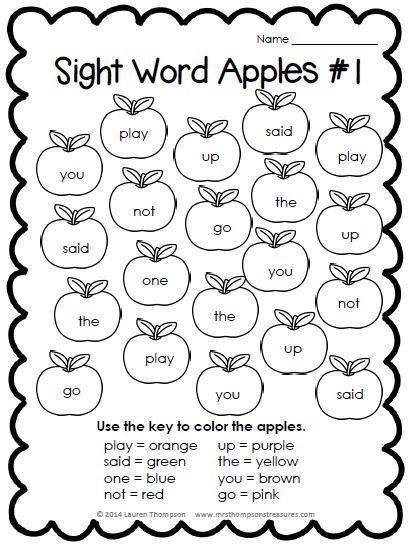 nine0003
nine0003
With all the advantages, these devices also have disadvantages. The main one is the dependence on the power source. As a rule, collimator sights run on batteries. However, current models use highly efficient energy-saving technologies to extend the life of standard cells from a few hundred to tens of thousands of hours. In addition, there are so-called passive collimators that operate on solar energy. "Hybrid" models have proven themselves well, which can be powered by a battery and a solar panel on the case. nine0003
Classic or hologram: design and types of collimators
A collimator sight looks like a box with a lens onto which an aiming mark is projected. To do this, the design of the device has a light source and a collimating optical system. Depending on the method of forming the sighting mark, sights are divided into classic (LED) and holographic.
In classic collimators, the light source is an LED. Such sights are of open and closed type.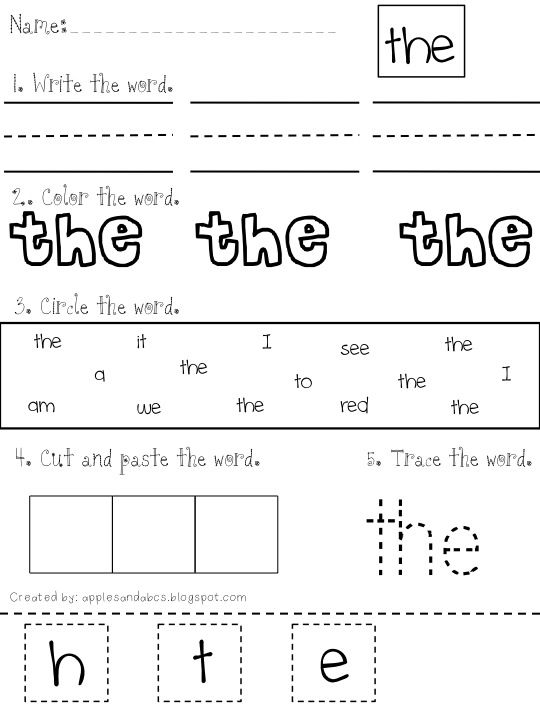 If there is only one optical part (lens) in the body of the sight, open on both sides, then this is an open sight. Of the minuses of this design is the insecurity of the lenses. So, the lens can crack or break, it gets dirty more easily, especially in rainy weather. These devices are usually used for rifles of small calibers, and small versions of open collimators are used on pistols due to their compactness and light weight. nine0003
If there is only one optical part (lens) in the body of the sight, open on both sides, then this is an open sight. Of the minuses of this design is the insecurity of the lenses. So, the lens can crack or break, it gets dirty more easily, especially in rainy weather. These devices are usually used for rifles of small calibers, and small versions of open collimators are used on pistols due to their compactness and light weight. nine0003
The collimator sight of the closed type has two flat protective glasses, between which there is a working lens and a light source. The whole structure is securely "packed" in a sealed case. Thus, the lens and the light emitter are protected from water and dust. This type of sights can be found on shotguns and rifled rifles of large caliber. In addition, they are often preferred by special forces soldiers.
The holographic sight is considered one of the novelties in this field, it is not yet very common due to its higher cost.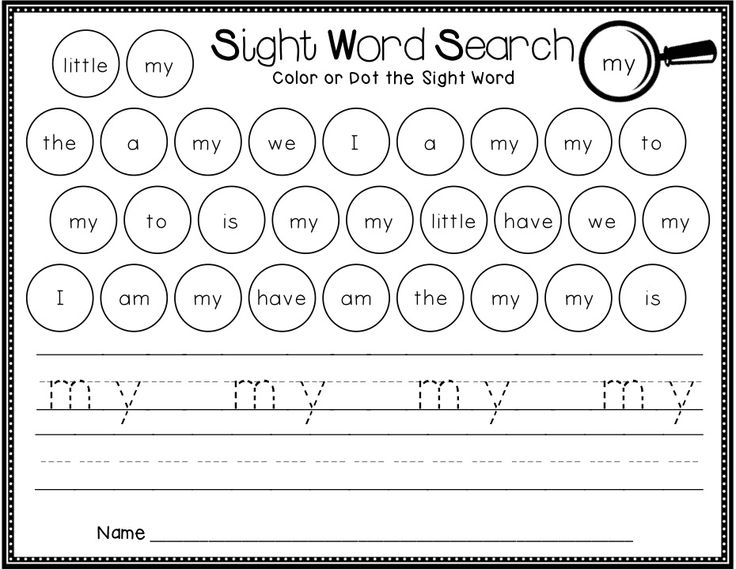 The principle of operation of a holographic collimator can be described as follows: the laser beam passes through the collimating optics and uniformly illuminates the diffraction grating, and then hits the holographic optical element, after which the formed hologram of the aiming mark is visible to the arrow. nine0003
The principle of operation of a holographic collimator can be described as follows: the laser beam passes through the collimating optics and uniformly illuminates the diffraction grating, and then hits the holographic optical element, after which the formed hologram of the aiming mark is visible to the arrow. nine0003
Among the advantages of holographic sights are the exclusion of the parallax effect at various distances, the absence of glare and laser radiation towards the target, and independence from weather conditions (the hologram will be visible even if part of the entrance window is covered with snow or mud, or even broken). In foreign armies, holographic collimator sights have been put into service. Sights of this type are patented by the Shvabe holding. In these models, the compensating diffraction grating simultaneously plays the role of a collimator. Recall that the Shvabe holding is the largest manufacturer of diffractive optics in Russia. nine0003
From airsoft to AK: how to choose a red dot sight
When choosing a collimator sight, first of all, you need to consider its compatibility with the type and caliber of the weapon.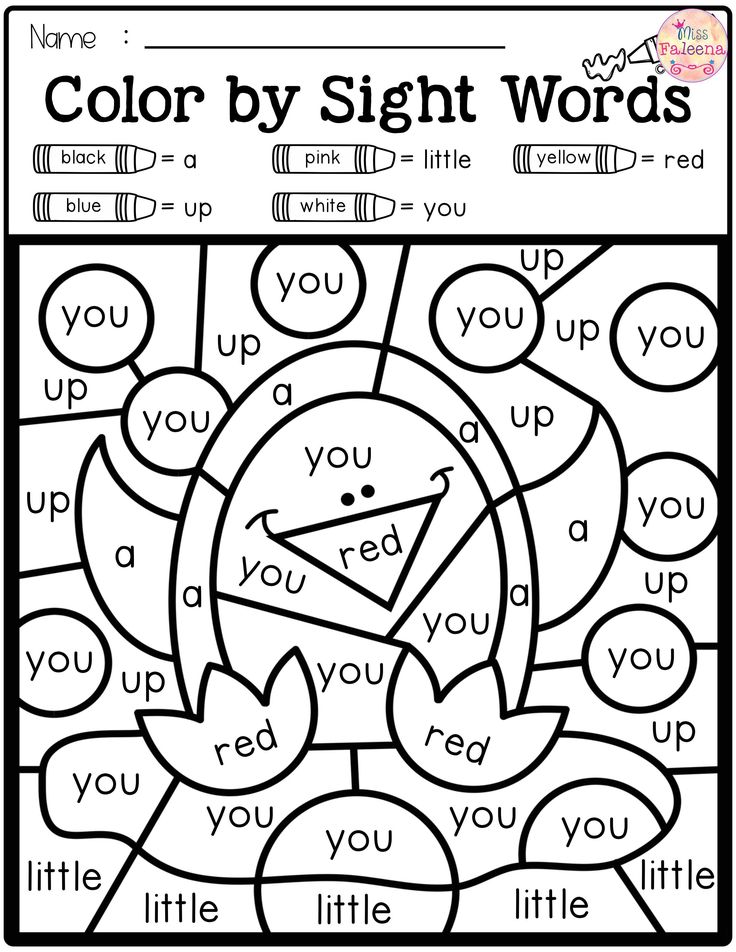 To do this, you should evaluate the resistance to recoil - in other words, pay attention to the energy of the bullet exit and compare it with the passport data of the sight.
To do this, you should evaluate the resistance to recoil - in other words, pay attention to the energy of the bullet exit and compare it with the passport data of the sight.
In addition, you need to decide on the option of the aiming mark - usually it's just a dot, less often - a circle with a dot or a check mark. Its size is indicated in arc minutes - MOA (an angle of one MOA gives a spot diameter of almost 3 cm at a distance of 100 meters). nine0003
The smaller the mark, the more accurately you can shoot at long distances. At the same time, the larger the diameter of the aiming mark, the easier it is to aim offhand at a moving target at distances up to 70 m. In this situation, the shooter should decide what is in priority.
"Kalashnikov RDS-CC"
But, perhaps, the main rule when choosing a collimator sight is that it must be of high quality. Therefore, it is better to purchase modern models from leading manufacturers. One of the domestic novelties is the Kalashnikov RDS-CC collimator sight.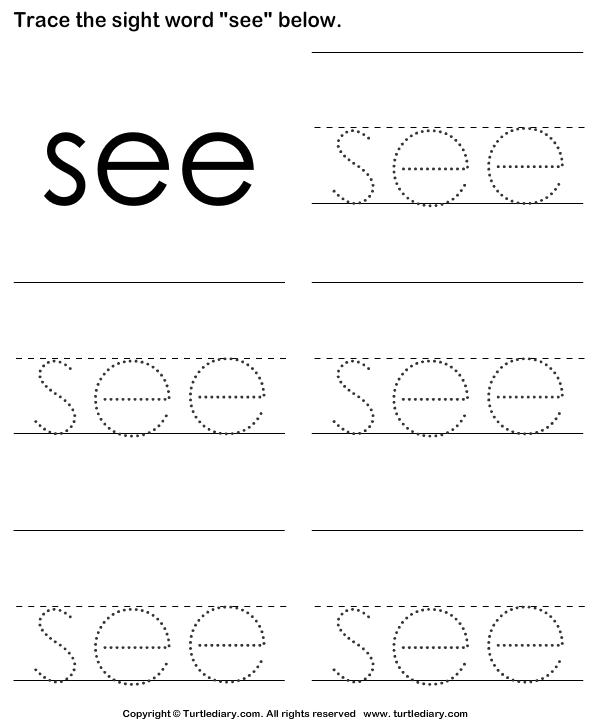 The device was developed jointly by specialists from the Vologda Optical and Mechanical Plant JSC and the Kalashnikov Concern, and is mass-produced at the Vologda Optical and Mechanical Plant of the Shvabe holding. nine0003
The device was developed jointly by specialists from the Vologda Optical and Mechanical Plant JSC and the Kalashnikov Concern, and is mass-produced at the Vologda Optical and Mechanical Plant of the Shvabe holding. nine0003
"Kalashnikov RDS-CC" is a closed-type sight with an all-metal body, perfectly protected from dust, moisture (corresponds to IP67 IEC60529:2013), possible impacts. "Kalashnikov RDS-CC" has ten levels of brightness of the aiming mark, the desired level is selected depending on the illumination of the environment. The three lower brightness levels are not visible to the naked eye and are designed to work with night vision devices (NVD). The sight uses a standard CR2032 battery, which lasts for 10,000 hours at an average brightness level under normal climatic conditions (NCU). nine0003
PKU-2 Hunter
The development of collimator sights of open and closed type is also carried out at another enterprise of the Shvabe holding - the Krasnogorsk plant named after.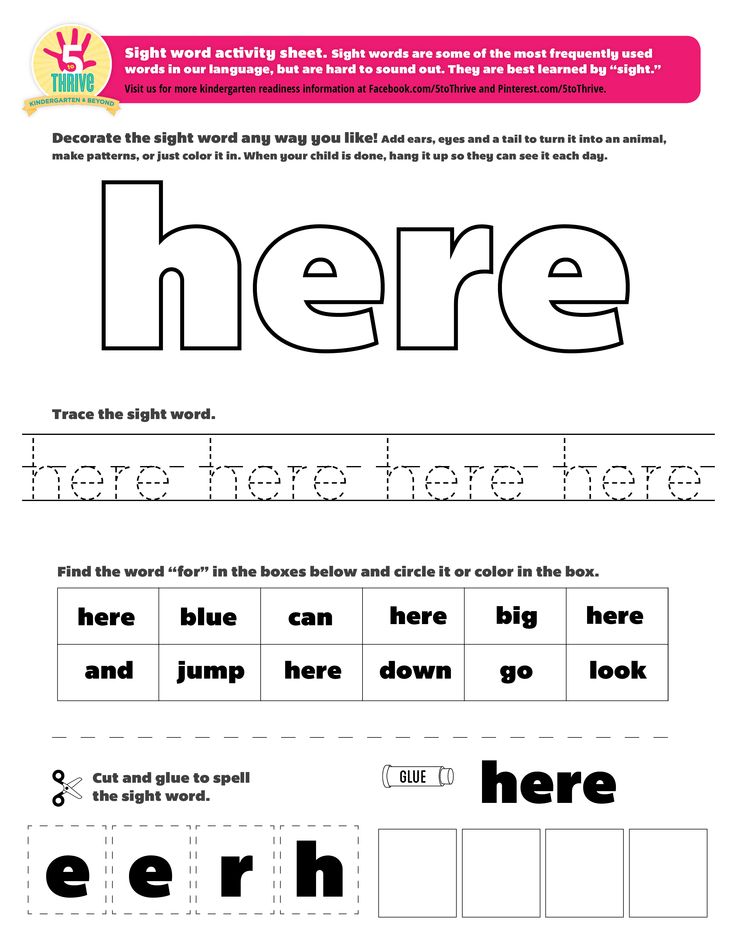 S.A. Zvereva (KMZ). The enterprise plans to master the serial production of a closed-type collimator sight "PK SM-N1" and an open type - "PK CM-N2".
S.A. Zvereva (KMZ). The enterprise plans to master the serial production of a closed-type collimator sight "PK SM-N1" and an open type - "PK CM-N2".
Another manufacturer of sighting equipment within the Shvabe holding, the Novosibirsk Instrument-Making Plant (NPZ), is known for its PK-4 collimators with energy-efficient illumination and PKU-2 Hunter with an aspherical lens. These devices can be used by both law enforcement officers and hunters and sportsmen. The latter released an upgraded version of the PKU-2 PRO - it has an unprecedentedly low parallax value for collimator sights, comparable to the parallax parameter of high-precision optics. Refinery developers recommend using this closed collimator for solving professional problems both in hunting and sports, and in the interests of various departments. nine0003
An excerpt from the book "Wordplay" by translator Vladimir Babkov - Snob
"Jean Mielo at his desk".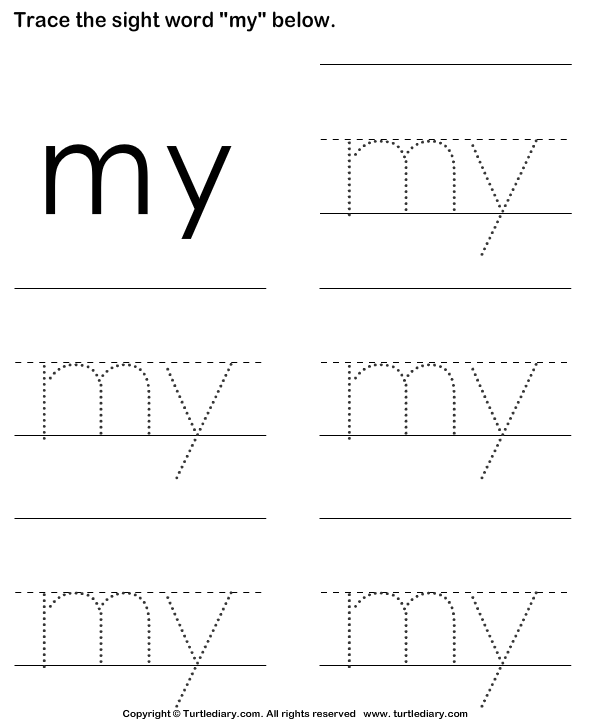 2nd half of the 15th century. Unknown miniaturist
2nd half of the 15th century. Unknown miniaturist
Photo: Royal Library of Brussels / Wikipedia
The simplest definition of synonyms is as follows: these are words that are spelled and sound differently, but have the same or similar meanings. Strictly speaking, for our purposes, it would have to be slightly modified, since we are interested not only in the direct meaning of each word, but also in all its “side” properties (in particular, how it is written and pronounced), and the latter sometimes turn out to be slightly is not more important than the first. It follows from this that two synonyms that are absolutely identical in the sense we need do not exist. One could reformulate the standard definition and say that synonyms are words that perform approximately the same role in a literary text, or define them even more briefly as interchangeable words (and sometimes combinations of words). But I suggest not to strive for scientific accuracy, otherwise we will get completely confused.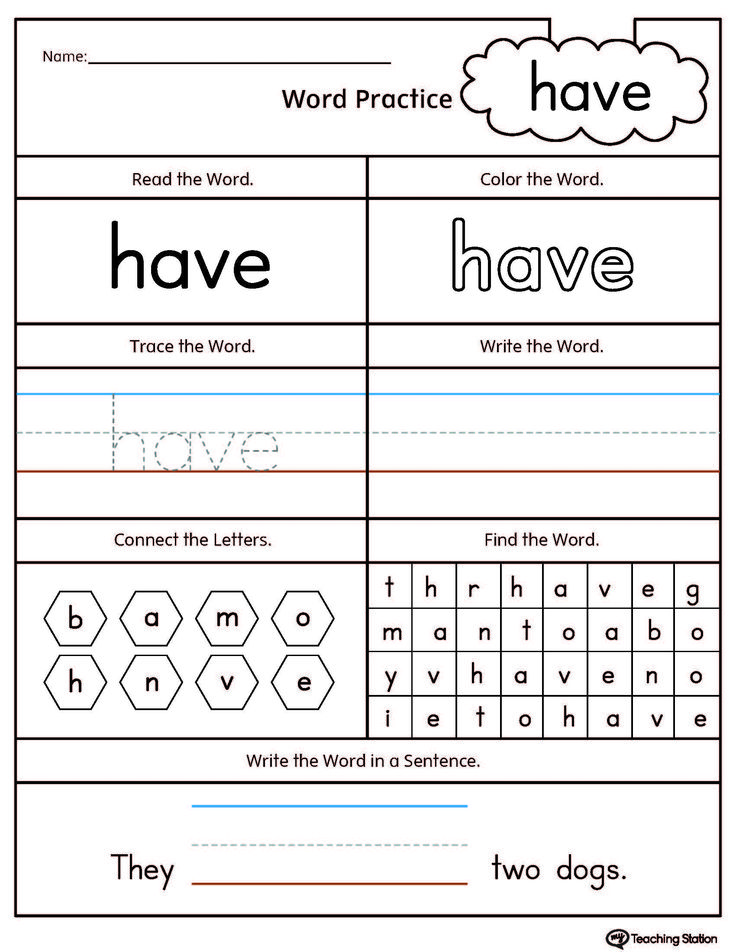 Let's stick to the classical definition, let's just take into account that a) even when replacing a single word in a phrase with another, closest to it in direct meaning, this phrase changes, sometimes dramatically, and b) on the contrary, in a literary text even very distant from each other in the actual meaning of the words can be quite interchangeable. Try, for example, to replace any word in a phrase from some official document (and such a phrase can also be found in a novel) with its colloquial or dialectal counterpart, and you will see the validity of the first clause. We have already seen examples illustrating the second when discussing the limits of translational freedom, and we will soon see new ones. nine0003
Let's stick to the classical definition, let's just take into account that a) even when replacing a single word in a phrase with another, closest to it in direct meaning, this phrase changes, sometimes dramatically, and b) on the contrary, in a literary text even very distant from each other in the actual meaning of the words can be quite interchangeable. Try, for example, to replace any word in a phrase from some official document (and such a phrase can also be found in a novel) with its colloquial or dialectal counterpart, and you will see the validity of the first clause. We have already seen examples illustrating the second when discussing the limits of translational freedom, and we will soon see new ones. nine0003
Even if we do not take into account words that are formally synonyms, but are too far from each other in stylistic coloring, our language is so rich that almost every word in an arbitrary Russian phrase can be found a completely acceptable replacement - and, as a rule, more than one .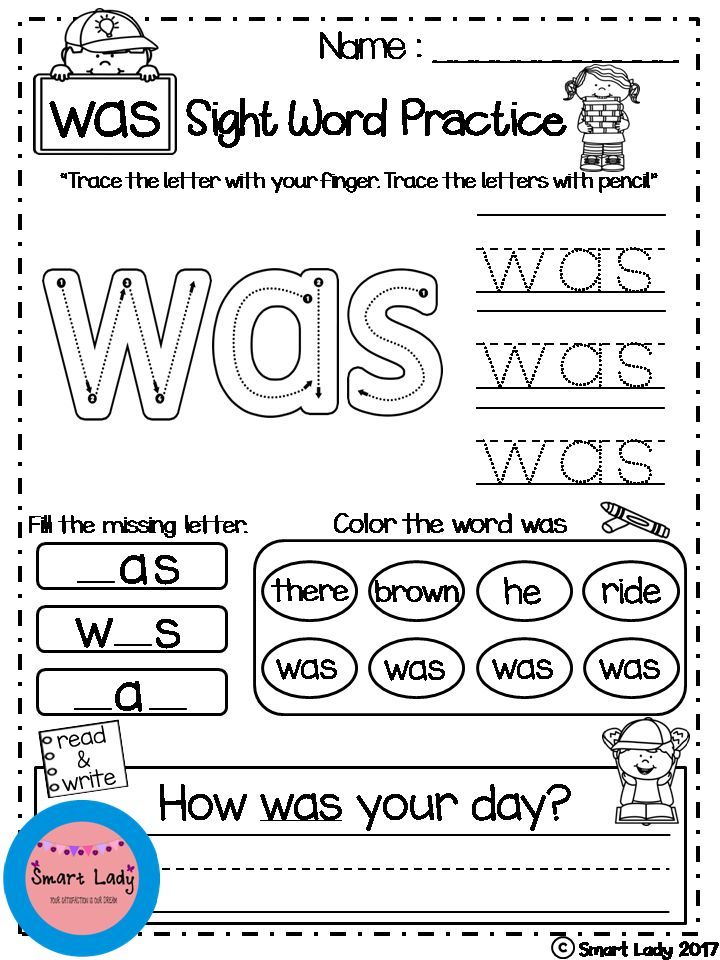 If, on the other hand, we include in the synonymic series and cognate words that differ only in suffixes (which is not only legal for the translator, but also necessary), they will become even longer.
If, on the other hand, we include in the synonymic series and cognate words that differ only in suffixes (which is not only legal for the translator, but also necessary), they will become even longer.
Let's play some numbers. If every word in a small phrase—say, ten words—has at least three suitable synonyms, then the number of possible translations for the entire phrase is over a million: four to the tenth power, or 1,048,576. To calculate the number of possible translations English phrase of the appropriate length, this number should be increased at least several (or even several dozen) times, because there are often many more synonyms for words, and the syntactic structure of the translated phrase can be different. By the way, this means that the probability of two translations of the same phrase by different people being identical is practically zero. That is why it is so easy to recognize plagiarism in our business: even if a cunning student takes the trouble to change two or three words in each phrase he has copied from a friend, his dishonesty is unmistakably determined at a glance at both translations.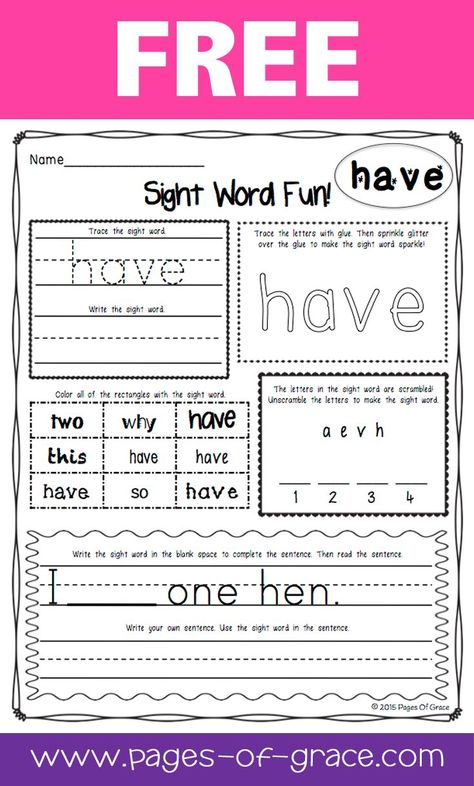 nine0003
nine0003
Let's leave syntax aside and focus only on vocabulary. How to choose the best translation of a phrase from all possible options, and is there one at all? Before trying to answer this question, let's discuss another, easier one: where do we look for synonyms for the words that make up our phrase?
The answer "on the Internet" is incorrect for several reasons. First: diving into the Internet for synonyms, albeit not every, but at least every fifth Russian word that comes to our mind, there is no physical possibility. Second: constantly turning to the Internet for synonyms is an admission of one's writing incompetence, not to say unsuitability. After all, not so long ago there was no Internet at all, and writers (who, of course, have the problem of choosing the most suitable words no less acute than translators) managed to write excellent books without it. You might argue that paper dictionaries used to replace Internet authors. Perhaps you even know that there are special dictionaries of synonyms in the world. Moreover, if not in Russian, then in English there are dictionaries designed specifically for writers (in the broad sense of the word), - for example, Roget’s Thesaurus of English Words and Phrases is a very good Thesaurus. Well, writers do use dictionaries, and sometimes quite willingly. However, they are much more willing to use their own heads, and in this respect, we, translators, should strive not only to catch up with them, but also to overtake them: after all, in terms of vocabulary, we should be the same generalists as in terms of stylistic devices. The hunt for new words contributes only to a very small extent to achieving this universality. We already know almost all the words that can be useful to us: if you still look for the necessary synonymous series on the Internet, do you often come across completely unfamiliar words in it? But if you just find the right word on the Internet, it will very soon return to the shelf in the far corner of your personal vocabulary. It is much more useful to strain your brains and remember it yourself - then the second time it will turn out faster, and then it will not require any special efforts at all.
Moreover, if not in Russian, then in English there are dictionaries designed specifically for writers (in the broad sense of the word), - for example, Roget’s Thesaurus of English Words and Phrases is a very good Thesaurus. Well, writers do use dictionaries, and sometimes quite willingly. However, they are much more willing to use their own heads, and in this respect, we, translators, should strive not only to catch up with them, but also to overtake them: after all, in terms of vocabulary, we should be the same generalists as in terms of stylistic devices. The hunt for new words contributes only to a very small extent to achieving this universality. We already know almost all the words that can be useful to us: if you still look for the necessary synonymous series on the Internet, do you often come across completely unfamiliar words in it? But if you just find the right word on the Internet, it will very soon return to the shelf in the far corner of your personal vocabulary. It is much more useful to strain your brains and remember it yourself - then the second time it will turn out faster, and then it will not require any special efforts at all.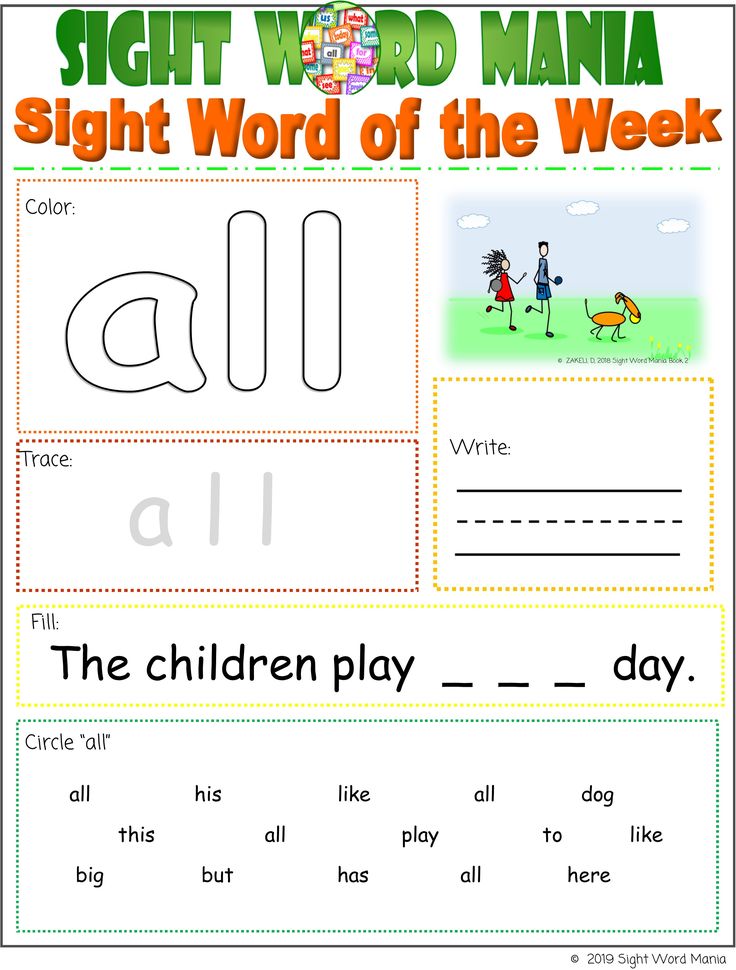 An experienced translator, at the sight of an English word known to him, immediately recalls not its only Russian equivalent, but a whole series of synonyms, and very quickly, almost automatically, chooses a better word from this series. nine0003
An experienced translator, at the sight of an English word known to him, immediately recalls not its only Russian equivalent, but a whole series of synonyms, and very quickly, almost automatically, chooses a better word from this series. nine0003
There is a third reason why searching for synonyms on the Internet or paper dictionaries is not only ineffective, but also harmful, and it is especially relevant for translators. Translating another book, we always remain under its influence - in the words of Wells, "in a tiny bright world, completely cut off from everyday reality" (however, this world is sometimes a gray and rather gloomy place, but for some reason we are still drawn there ). Staying in the atmosphere created by the author is the most important condition for our success. Only under strict observance of this condition are we able to invent Russian phrases that are correct in spirit. With regard to vocabulary, this means that not all members of the synonymic series automatically come to mind, but only those that correspond to our text in style.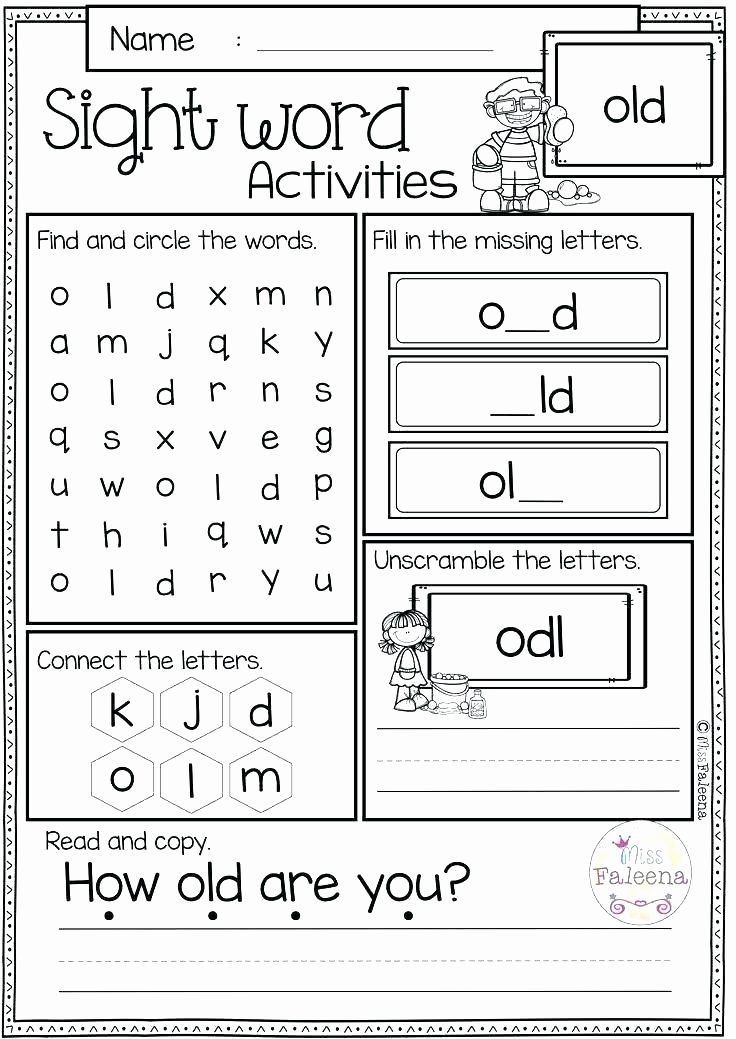 The Internet offers these series in full; in this sense, he is like a conscientious idiot who goes out of his way to give helpful advice. At best, this can amuse us, but the desired mood will be lost in this case - as a rule, with sad consequences. So I would advise you to turn to the Internet only when you almost know exactly what you are looking for - when the word you need is, as they say, spinning on the tongue, but you just can’t remember it and are already seriously annoyed by this. Then your gaze will be more targeted, and you will immediately catch the cherished solution from the proposed list. nine0003
The Internet offers these series in full; in this sense, he is like a conscientious idiot who goes out of his way to give helpful advice. At best, this can amuse us, but the desired mood will be lost in this case - as a rule, with sad consequences. So I would advise you to turn to the Internet only when you almost know exactly what you are looking for - when the word you need is, as they say, spinning on the tongue, but you just can’t remember it and are already seriously annoyed by this. Then your gaze will be more targeted, and you will immediately catch the cherished solution from the proposed list. nine0003
And now it's time to finally discuss the main thing: how to choose the best words from the synonymous series. It would be most logical to borrow the algorithm for this procedure from our role model (it seems that this tracing paper is already firmly stuck in the Russian language) - namely, from the author of the original. The choice of words is an element of style, one of the components of writing technique, and we need to adopt it from writers.
However, writers behave quite differently in this sense. Someone seems to be spitting words through his teeth, like a real macho, making do with a deliberately meager vocabulary, and someone flaunts his erudition, now and then taking out such boustrophedons and popokatepetli from his bosom, which we never dreamed of even in the most terrible dreams. Is there anything in common between the writers, or does the translator have to try on a new author every time, trying to unravel his special system? nine0003
I would answer yes to both parts of this question. Or rather, like this: if we do not take into account pronounced marginals, we will notice that with regard to lexical choice, most writers adhere to the golden mean, that is, they prefer words that are not the rarest, but not the most worn (I would say "not the most hackneyed" but I'm sorry to beat the words). And the reasons for this are quite understandable. As a rule, a good writer is not concerned with creating his own unique image in the eyes of the public, but with telling readers an interesting and important story for himself. If you tell this story in the most simple and familiar words, you can win in persuasiveness, but there is a risk that the reader will quickly get bored, and even accuse the author of incompetence or lack of effort. If, however, you constantly surprise the reader with exotic vocabulary, it will be difficult for him to follow the development of the plot, and in addition, he may suspect that the author wants to demonstrate his superiority over him, and this causes understandable irritation. Therefore, writers most often choose the middle way, using not the most standard, but not too outlandish words. nine0003
If you tell this story in the most simple and familiar words, you can win in persuasiveness, but there is a risk that the reader will quickly get bored, and even accuse the author of incompetence or lack of effort. If, however, you constantly surprise the reader with exotic vocabulary, it will be difficult for him to follow the development of the plot, and in addition, he may suspect that the author wants to demonstrate his superiority over him, and this causes understandable irritation. Therefore, writers most often choose the middle way, using not the most standard, but not too outlandish words. nine0003
Let's sum it up. If, with regard to the choice of vocabulary, the author of the book you are translating belongs to the conditional "middle peasants" (and the probability of this is quite high), then the most correct thing to do is to compose the necessary synonymous rows in your mind, arrange the words in them according to the frequency of use, from high to low (in this sequence we usually remember them), and look for a suitable word somewhere in the middle.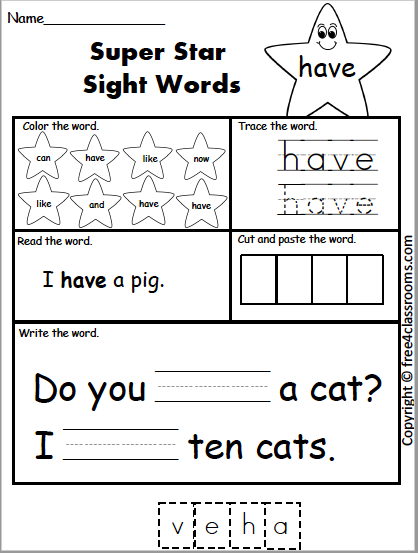 If you notice that your author deviates from such a moderate lexical variety in one direction or another (I am talking here only about the use of words, but not about their stylistic coloring), you have no choice but to follow him. nine0003
If you notice that your author deviates from such a moderate lexical variety in one direction or another (I am talking here only about the use of words, but not about their stylistic coloring), you have no choice but to follow him. nine0003
You might get the impression that those writers who tend to use more primitive or more elaborate vocabulary always make a mistake. This is not true. The writer may pretend to be direct and direct, or may be; can pretend to be a clever man and an erudite, or maybe he is. If you feel that the writer's unusual vocabulary is an organic element of his personality, that's all right - reproduce this unusualness, and the reader of your translation will also find it appropriate. We must also take into account the fact that the authors very often deliberately hide behind a specially invented mask, even if they are telling the story not from the first, but from the third person, from the point of view of an outside observer. Some also change their masks - this technique is very popular among postmodernists. So the golden mean, as applied to vocabulary, is nothing more than a guideline, the very fulcrum that allows the translator Archimedes to find the optimal position in space for his planet. nine0003
So the golden mean, as applied to vocabulary, is nothing more than a guideline, the very fulcrum that allows the translator Archimedes to find the optimal position in space for his planet. nine0003
Let's try to understand one more thing: why, even with more or less similar tactics, we still choose such different words for our translations? Sometimes one simply wonders when looking at a dozen translations of the same short prose fragment: it seems that they have absolutely nothing in common. This is probably due to the fact that we treat words very differently - and not only because we differ from each other in age, character, upbringing, education, and so on, but also because each of us has a backpack behind us. with a unique life experience. In every word that we use, a colossal amount of impressions and memories associated with it is sewn up; our attitude to any particular word is largely determined by the situation in which and from whom (and where) we heard (or read) it for the first time, by what exactly it meant then, and even by what mood we were then, and this is true not only for those words that we use relatively rarely.